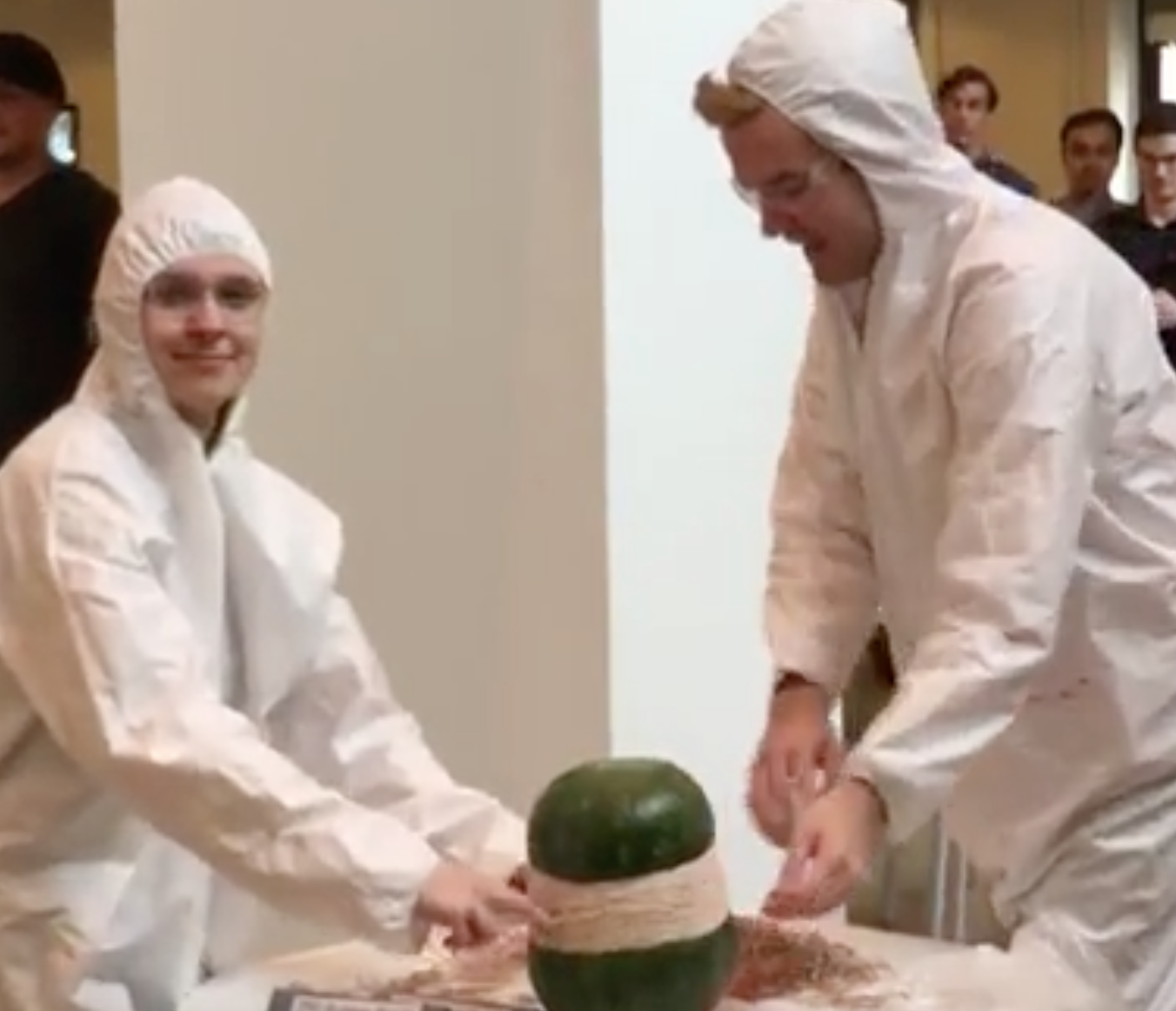It started innocuously enough.
Two BuzzFeed staffers sat around a small, circular table, wearing smocks and safety glasses. Between them was a watermelon and a pile of rubber bands. Their mission: blow up the watermelon by gradually adding bands until it burst from the tension.
Over the course of an hour, that tension — and BuzzFeed’s audience — would grow exponentially. At its peak, the video, broadcast using Facebook Live, was watched by more than 800,000 people at the same time, according to a BuzzFeed spokesperson. To put that into perspective, that’s more viewers than:
- MSNBC‘s average total dayside viewers in February. (526,000)
- The number of viewers, on average, who tuned into “Reliable Sources” each Sunday in 2015. (522,000)
- A livestream from the band Weezer, which was holding a concert at the same time. (18,000)
With two staffers, a fruit and and a digital recorder, BuzzFeed was able to draw many more viewers than cable news shows at a fraction of the production cost. That’s a paltry investment for a very large payoff and speaks to the power of Facebook Live to generate “driveway moments” that capture a huge share of the conversation on social media.
Like any success, BuzzFeed’s experiment quickly spawned imitators. Daniel Bentley, a digital editor at Fortune, quickly began stapling an orange on Facebook Live, eliciting guffaws from his colleagues, 17,272 views and a ruined fruit.
So, why did BuzzFeed’s video rack up many more thousands of views than Bentley’s? I think it has something to do with the tension — both physical and emotional — generated by the rubber band challenge. When BuzzFeed began its video, staffers stated a clear objective, with a predetermined end: They were going to blow up the watermelon. This served as a useful framing device for the stream and kept people engaged over the course of the hour.
As the tension built, more and more users tuned in. Although everyone knew how the story was supposed to end — with a detonated gourd — they didn’t quite know when, or precisely how. The incremental tension drove incremental viewership, which culminated in an audience that was ready to burst at the top of the hour along with the watermelon.
News organizations looking to follow in BuzzFeed’s footsteps would be wise to remember two lessons demonstrated today. First, livestreams are stories, just like any other content generated by a news organization. At their best, they should have a beginning, middle and end — ideally one that elicits an emotional reaction from the viewer. And, if possible, they should include an element of uncertainty to sustain the audience’s interest.
Not all livestreams are going to take off with the same success as today’s video, of course. Most news organizations wouldn’t arrange a stunt for the sake of causing an online spectacle. But as Facebook begins to allow news organizations to monetize its livestreams, newsroom managers might be wise to figure out how they can apply today’s lessons to their own coverage.
Correction: A previous version of this story misstated MSNBC’s viewership for the first quarter of 2016.






